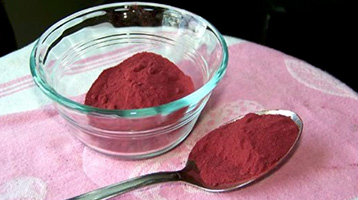Adding Nutrition with Vegetable Powders
[shareaholic app="share_buttons" id="27983777"]
When I ended up with more fresh produce than I could use, I used to freeze it. But then bags of vegetables got buried in the chest freezer until I eventually unearthed unappetizing, freezer burnt blocks of questionable origin. The thawed veggies were then mushy with off-flavors that were only suitable for hodgepodge vegetable soups. One day, I put excess squash in my dehydrator instead of the freezer, and I realized my problem had been solved.
I’ve dehydrated leafy greens, summer and winter squash, tomatoes, bell peppers, and hot peppers. To prepare them, wash off any dirt, pat dry, and slice the vegetables thin. Most dehydrators recommend drying vegetables between 125 and 135 degrees. With a little patience, they can also be dried in the oven on the lowest temperature setting. I cook pumpkins and winter squash before drying, since they’re easier to peel and slice that way. When drying tomatoes, cut small ones into halves or quarters and place them peel-side down on the dehydrator sheet. Leave the seeds and juices in them, since much of the flavor is in that tomato juice.
After drying, put vegetables in a food processor or spice grinder and turn them into powders. Multiple pounds of produce becomes a jar of powder, so it takes up much less space than the frozen vegetables. The best part, however, is that powders are easier to sneak into meals. They don’t leave obvious pieces for picky eaters to remove, and you can add less but still get the same nutrition. One packed cup of fresh vegetables is equal to approximately ¼ cup of powder. (This ratio will vary depending on how much water is in that cup of vegetables.)
Vegetable powders are extremely versatile. Add some to meatloaf, hamburger patties, or egg dishes. Stir into soups, sauces, and salsas. Sprinkle onto pizza, popcorn, pasta, or other grain dishes. I recommend adding just a spoonful or so to meals until you know how much you like, since flavors are more concentrated after drying. Replace up to ¼ cup of flour in your baked goods with a mild powder like pumpkin or squash. Create your own seasoning mixes or salad dressings with some spices and veggie powders.
Red beet powder is my new favorite. I’m not a fan of eating beets but I want the benefits, so I add a ½ teaspoon to my morning yogurt. It turns the yogurt a beautiful, bright shade of pink.
Have you used vegetable powders yet?


